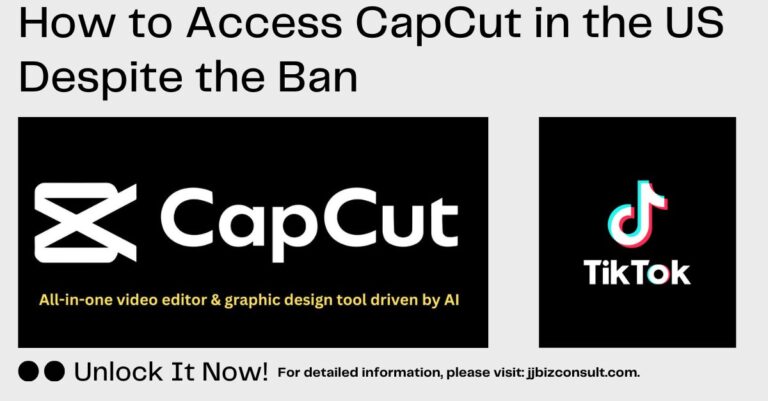
Social Media eCommerce - How to Get the Most Benefit
Social Media eCommerce – How to Get the Most Benefit. Here is How to Use Social Media for the Most Ecommerce Sales.
Choose the right social media platforms
Choosing the right social media platforms is crucial for any ecommerce business to succeed in their social media marketing strategy. The first step is to understand that not all social media platforms are the same, and each platform has its own strengths and weaknesses. For instance, Instagram is an ideal platform for businesses that want to showcase their products visually, with its focus on images and videos. On the other hand, Twitter is great for businesses that want to engage in real-time conversations with their customers and have a more text-based approach to their marketing efforts.
Once you have a clear understanding of the strengths and weaknesses of each platform, the next step is to identify which platforms your target audience is most active on. This will help you focus your efforts on the platforms that matter the most to your business. To do this, you can use social media analytics tools to track your audience’s behavior on different platforms, such as what type of content they engage with the most and when they are most active.
By focusing your efforts on the social media platforms where your target audience is most active, you can effectively engage with them and drive traffic to your ecommerce site. This will help you get the most out of your social media marketing efforts and boost your ecommerce sales.
Optimize your social media profiles.
Optimizing your social media profiles is an essential step in driving ecommerce sales. Your social media profiles are often the first point of contact between potential customers and your brand. Therefore, it’s important to ensure that they are visually appealing, informative, and optimized to drive sales.
Your profile picture and cover photo should be visually appealing and showcase your brand. Use high-quality images that are relevant to your brand and product. Avoid using low-quality or blurry images that can create a negative impression of your brand.
Your bio is another critical element that should be optimized for ecommerce sales. It should clearly communicate your unique selling proposition (USP) and highlight what sets you apart from your competitors. Your bio should be concise, easy to read, and provide a clear value proposition to your potential customers.
In addition to your bio, it’s important to include a link to your ecommerce site on your social media profiles. This link should be prominently displayed and easily accessible to your followers. This allows customers to easily navigate to your ecommerce site and make a purchase, which can ultimately drive sales.
Overall, optimizing your social media profiles can significantly impact your ecommerce sales. By creating visually appealing and informative profiles that clearly communicate your USP and provide a link to your ecommerce site, you can attract and convert more customers on social media.

Share user-generated content (UGC)
User-generated content (UGC) is a valuable asset for any ecommerce business. This is because it not only serves as social proof, but also helps to create an authentic connection between your brand and your customers. By encouraging your customers to share their own photos and videos of your products, you can showcase them in real-life situations and demonstrate how they are being used and enjoyed by others.
To effectively share UGC, you can start by creating a branded hashtag and encouraging your customers to use it when sharing their posts. You can also run contests or promotions that incentivize customers to share their photos and videos. When sharing UGC on your own social media channels, be sure to tag the customer who created it and give them credit for their contribution. This helps to build a sense of community around your brand and can encourage others to share their own content as well.
To ensure that the UGC you share is of high quality, consider setting guidelines or rules for what types of content you will share. This can include requirements such as clear photos, product focus, and compliance with your brand values. By doing so, you can create a consistent look and feel for your UGC and ensure that it aligns with your brand messaging and identity.
In summary, sharing user-generated content is a powerful way to boost ecommerce sales through social media. By leveraging the creativity and experiences of your customers, you can create a strong sense of community around your brand and showcase your products in real-life situations. Encourage your customers to share their own content and be sure to give credit where credit is due to build a loyal and engaged following on social media.
Leverage influencer marketing
Influencer marketing has become increasingly popular in recent years as a way to promote products and drive sales. With social media, influencers can reach a wide audience with their content and recommendations, making them valuable partners for ecommerce businesses. When leveraging influencer marketing, it’s important to identify influencers who are a good fit for your brand and have a large following in your niche. This helps ensure that their content resonates with your target audience and drives engagement.
Working with influencers can take many forms, from sponsored posts and product reviews to social media takeovers and brand collaborations. These partnerships can be mutually beneficial for both parties, as influencers gain exposure to your brand and products, while your business benefits from increased visibility and credibility. However, it’s important to disclose sponsored content and follow regulations, as many countries require it by law.
When working with influencers, it’s also important to set clear expectations and goals for the partnership. This can include specific metrics you want to achieve, such as sales or engagement rates, as well as any guidelines or brand messaging you want the influencer to follow. By setting clear expectations and goals, you can ensure that your influencer marketing campaigns are effective and aligned with your overall ecommerce strategy.

Use social media advertising
Social media advertising is a highly effective way to drive ecommerce sales as it allows you to target highly specific audiences based on their demographics, interests, and behaviors. With platforms like Facebook, Instagram, and Twitter, you can use their advertising tools to create ads that showcase your products and drive traffic to your ecommerce site.
To make the most of social media advertising, you need to understand your target audience and create ads that resonate with them. For instance, if you are selling fashion products, your ads should be visually appealing and showcase your products in a way that makes them look attractive.
One of the benefits of social media advertising is that it is highly cost-effective. You can set a budget for your ads and pay only when someone clicks on them. Moreover, you can track the performance of your ads in real-time, which means you can make adjustments to optimize their performance.
To create effective social media ads, you need to use high-quality images or videos, catchy headlines, and compelling calls-to-action (CTAs). Your CTAs should be clear and direct, telling the user exactly what to do next. For example, “Shop now” or “Learn more” are popular CTAs that encourage users to take action.
In conclusion, social media advertising is a powerful tool for driving ecommerce sales. By leveraging the targeting capabilities of social media platforms, creating engaging ads, and using compelling CTAs, you can drive more traffic to your ecommerce site and increase your sales.
Offer exclusive promotions
Offering exclusive promotions on social media is a great way to drive ecommerce sales. By offering discounts, free shipping, or other incentives, you can encourage your followers to make a purchase. To make these promotions even more effective, create a sense of urgency by setting a deadline for the promotion. This will encourage followers to act quickly and make a purchase before the promotion expires.
One way to offer exclusive promotions is to create a coupon code or discount that can only be redeemed on your ecommerce site. Share this code on your social media channels and encourage followers to use it at checkout. You can also offer free gifts or samples with purchases made through your social media channels, which can help to incentivize potential customers.
Another way to offer exclusive promotions is to run a contest or giveaway on social media. Ask followers to share or engage with your content in order to enter, and offer a prize such as a gift card or free product to the winner. This can help to increase engagement on your social media channels and drive traffic to your ecommerce site.
Remember to track the success of your promotions and adjust your strategy as needed. Keep an eye on metrics such as conversion rates, click-through rates, and engagement rates to see what’s working and what’s not. This will help you to refine your approach and ensure that you’re getting the most out of your social media efforts.
Engage with your audience
Engaging with your social media audience is crucial for building relationships and trust with them. By responding to comments and messages promptly, you show your audience that you value their opinions and are interested in their feedback. This can lead to increased loyalty and repeat sales over time.
One way to engage with your audience is by asking for their opinions on new products or features. You can create polls on platforms like Instagram or Twitter to gather feedback and insights from your followers. By involving them in the decision-making process, you make them feel valued and heard, which can lead to increased loyalty and positive word-of-mouth.
Another way to engage with your audience is by featuring user-generated content (UGC) on your social media channels. As mentioned earlier, UGC is a powerful tool for social proof and can help boost ecommerce sales. By sharing photos and videos of your products taken by real customers, you not only showcase your products in real-life situations but also show that others are using and enjoying them.
You can also engage with your audience by creating social media contests or giveaways. This is a great way to generate buzz around your brand and products, and encourage followers to engage with your content. Make sure to follow the rules and guidelines of the platform you’re using, and be sure to offer prizes that are relevant to your target audience.
Overall, engaging with your social media audience can help you build stronger relationships with them, which can lead to increased loyalty, positive word-of-mouth, and ultimately, more ecommerce sales.
Conclusion
In conclusion, social media can be a powerful tool for driving ecommerce sales and growing your business. By following the strategies mentioned above, you can create a strong presence on social media that resonates with your target audience and encourages them to make a purchase. However, it’s important to keep in mind that what works for one business may not work for another, so it’s essential to test and optimize your approach over time.
Track your metrics and analyze your results to see which social media platforms, content types, and strategies are driving the most traffic and sales to your ecommerce site. Use this data to refine your approach and double down on what’s working.
Remember, social media is an ever-evolving landscape, so it’s important to stay up to date with the latest trends and changes. Keep learning and experimenting with new strategies to continue to drive ecommerce sales and grow your business through social media.
Social Media Marketing – The Best Practical Guide
Social Media eCommerce – How to Drive Sales






